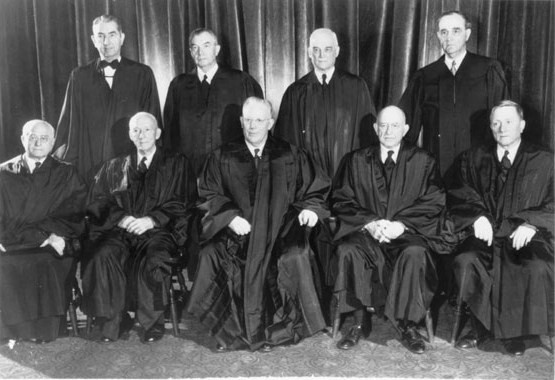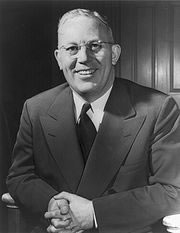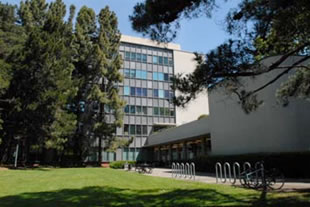
How Warren Hall got to Hearst Avenue, its present site (January 2009 installment)

The name of one of Berkeley’s most distinguished alumni, Earl Warren (undergraduate class of 1912, law school class of 1914), three-term governor of California and history-making chief justice of the U.S. Supreme Court, graced a large building along Oxford Street for over half a century — until the structure was torn down in 2008 to make way for the badly-needed Li Ka Shing Center for Biomedical and Health Sciences, named for its lead donor. As governor, Warren enacted into law the bill that created Berkeley’s School of Public Health, the first such school west of the Mississippi. The Shing Center, once completed, will be school’s new home.
To keep Warren’s name substantially represented on campus, Chancellor Birgeneau requested that it be transferred to a newish building at Hearst Avenue and Oxford Street, and the Office of the President approved.
As confusing as it might be for some with Warren Hall previously installed in their mental maps to suddenly find it in a different (if nearby) place looking quite unlike its old self, the change has reduced ambiguity in one way. For most of its relatively few years of existence, 2195 Hearst was designated, according to the sign over the entrance, as the “University of California, Berkeley.” A tall order for a three-story, 7,000-square-foot structure. It now says “Earl Warren Hall” over its doors, and houses the campus computer facility and campus units such as Information Systems and Technology, the Berkeley Seismological Laboratory, and the Controller’s Office.
Warren was a strong and sometimes controversial Chief Justice (after he delivered the unanimous opinion of the court in Brown v. Board of Education (opens in a new tab), which ended legal segregation in public schools; a virulent but unsuccessful campaign to impeach him lasted for years). He left an enduring legacy and some memorable quotes, including this one: “Everything I did in my life that was worthwhile I caught hell for.”
Prequel: 54 years on Oxford Street, then demolition (January 2008 installment)
The late Earl Warren was a Cal alumnus twice over (B.A. ’12, J.D. ’14). He was district attorney of Alameda County, attorney general of California, governor of California for three terms, a Republican vice-presidential candidate, and, as chief justice of the U.S. Supreme Court, one of America’s most influential and most controversial jurists (Brown v. Board of Education, Miranda v. Arizona, the Warren Commission).
Arnold Schwarzenegger, the current governor of Warren’s home state, inducted him into California’s newish Hall of Fame (opens in a new tab) at the end of 2007. The Hall of Fame was established in 2006 to honor “people who embody California’s innovative spirit and have made their mark on history.” The other inductees for 2007 were Ansel Adams, Milton Berle, Steve Jobs, Willie Mays, Robert Mondavi, Rita Moreno, Jackie Robinson, Jonas Salk, John Steinbeck, Elizabeth Taylor, John Wayne, and Tiger Woods. Exhibits featuring details of their lives and contributions are on display at the California Museum in Sacramento.

As governor, Warren presided, with UC President Robert Gordon Sproul, over an unprecedented expansion of the University of California system. Among many other UC tributes to the alumnus, Warren Hall at Berkeley was named in his honor, and the largest of UC San Diego’s six undergraduate colleges is named Earl Warren College. (Warren Hall, long Berkeley’s major center for public health education, is at the end of its useful life. Built 54 years ago, it is outmoded as a scientific facility and has been rated seismically poor. Its demolition is now underway. Replacing it on a site nearby will be the Li Ka Shing Center for Biomedical and Health Sciences, a sod-roofed eco-friendly “green building” that will house teaching, research, and faculty experts in stem cell biology, neuroscience, cancer biology, and infectious disease.
A tip of the hat, entitled “Farewell, Warren Hall,” appears in Public Health magazine, on the School of Public Health’s website (opens in a new tab) (PDF). Meanwhile, history buffs may enjoy this gallery (opens in a new tab) of more than a hundred images of the school and its people, from the dedication in 1955 to the present.
—Dick Cortén
(Originally published in eGrad, January 2009 and January 2008)
